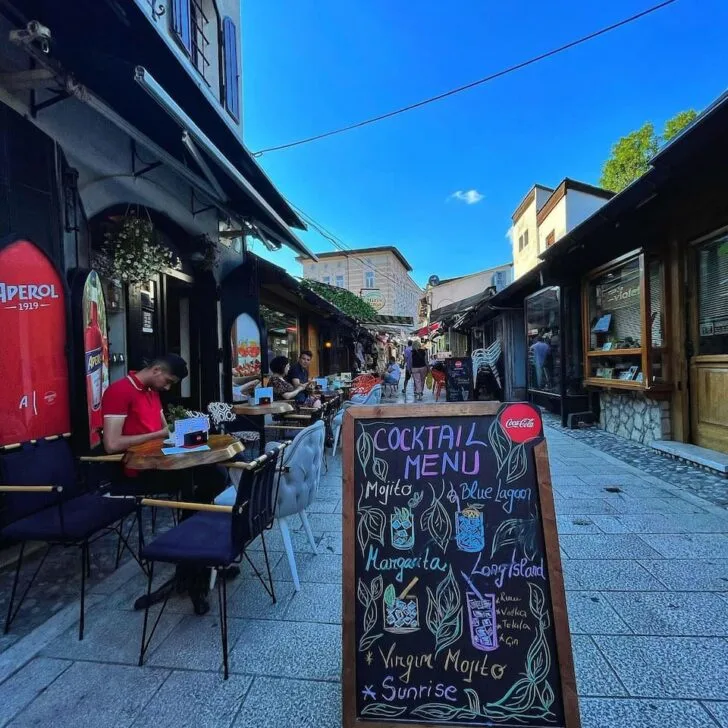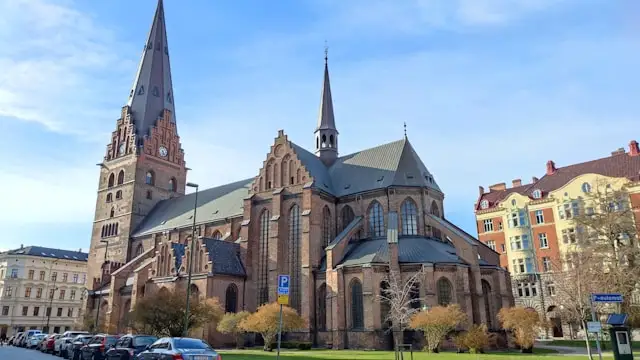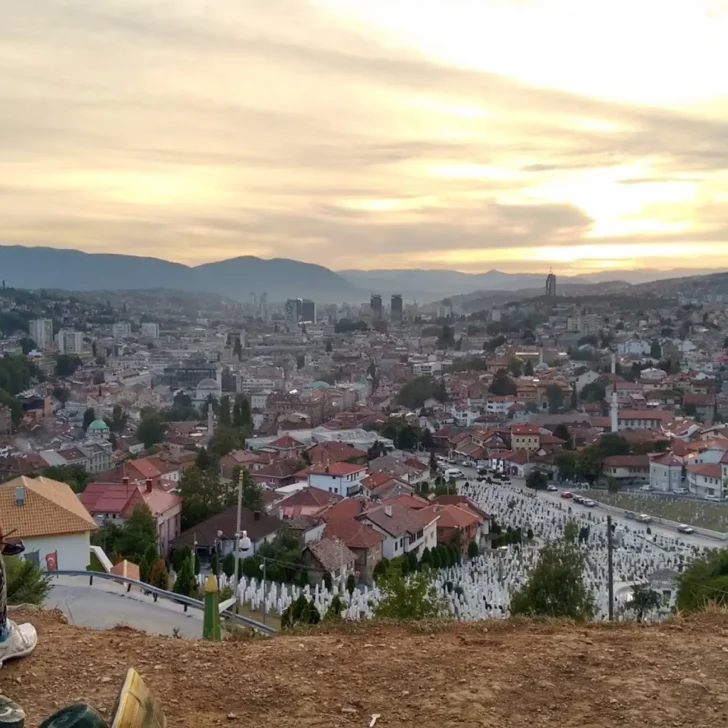We may receive a commission if you make purchases through affiliate links (at no extra cost to you). Read why our approach to travel is different.
In recent years, Mosul has made headlines for all the wrong reasons. As a major city of the Islamic State, Mosul was unfortunately destroyed in one of the most brutal urban warfare campaigns of modern history.
Today, amid immense reconstruction, Mosul is experiencing the new lease on life that it deserves. With each passing day, Mosul is being re-invented, with new roads, infrastructure projects and hotels, while heritage sites are slowly reopening. Compared to my first visit in 2020, Mosul today is a completely new city. And in my opinion, one day in Mosul will be on every Iraq itinerary.

While Mosul is under the control of the Iraqi government and deemed safe to visit, I always recommend people make informed decisions before visiting conflict or post-conflict zones.
Skip to...
9 am: An Iraqi Breakfast
Start your day the Iraqi way: with kahi geymar.
This quintessential Iraqi breakfast dish should be on every foodie’s itinerary. A flaky. layered bread is topped with water buffalo curd (or is it cream cheese? I still can’t tell). Unlike the use of honey in Baghdad, in Mosul, the kahi geymar is served with a clear sugary syrup.

For the best kahi geymar in Mosul, I always recommend a visit to Al Jandool.
10 am: Ruins of Nineveh
Mosul is home to the ruins of the ancient Assyrian capital of Nineveh. Unfortunately, the main gates of Nineveh were destroyed by ISIS, but you can still visit the crumbling city walls and see the newly reconstructed Nineveh gate.

If you are a history nerd like me, you will probably get a thrill from just casually walking alongside a 300+ year-old wall. The walls surround the city, but the best stretch can be found in the south of Mosul.

11 am: Honeymoon Hotel
Near to the destroyed gates of Saddam’s Mosul palace is the former Nineveh International Hotel. These days, the hotel is best known as the ISIS ‘honeymoon hotel’ – the place where ISIS fighters would go for the night of their wedding with their new brides. This former hotel saw heavy fighting during the war against ISIS and stands testament to the immense destruction of Mosul.

A new running path has been built which makes the walk from Saddam’s palace gates to the honeymoon hotel particularly pleasant. You can usually find tea sellers hovering nearby.

12 pm: Old Mosul
Nothing truly prepares for entering a destroyed residential area (which, unfortunately, you would also experience in Syria). Mosul Old Town used to be famous for its unique doorways and alleyways, and a shared Muslim – Christian area. It was as atmospheric as any old town in the Middle East, like Damascus’s Old City.

Urban warfare is cruel, and I completely understand why some would want to avoid seeing this. However, if you are traveling to Iraq, I think that there is something particularly important about bearing witness to the ruins. Only by seeing the kitchenware, children’s toys and bed linen covered in cement can you truly comprehend the human cost of war.

Warning: Old Mosul is still in the process of being de-mined. You will see homes marked ‘safe’ but, even then, do not venture off the main arteries.

There are multiple entrances to Old Mosul, but I always enter from Nabi Jojis Street.
1 pm: Al Nouri Mosque
The 12th century Great Mosque of Al Nouri and its leaning minaret are often considered the symbol of Mosul.

These days the Al Nouri Mosque is most closely associated with ISIS. It was here where Abu Bakr al-Baghdadi famously declared the establishment of the Islamic State. It is no surprise that the mosque saw heavy bombardment and destruction during the war against ISIS.

You can find the Al Nouri minaret on the 10,000 Iraqi Diner note. For the perfect Instagram photo, hold them up against each other!

Today, the site remains closed and is currently under restoration with help from UNESCO. You can still get a good view from the street or surrounding areas.
1:30 pm: A Mosuli Lunch
I would recommend two options for lunch (or ideally, a little bit of both).

First, Kubba Mosuli – one of the top foods to eat in Iraq. Heavily spiced ground meat covered in a dough made of bulgur wheat that is flattened and grilled. It’s a dish totally unique to Mosul and one of the best traditional foods of Iraq.
I would recommend getting some Kubbe Mosuli at Hadba Kibbeh (كبة الحدباء)) and taking it to sit at the cute little teahouse next door. If you are tired of black tea, consider trying limon chai basrawi, one of the most unique drinks you can only find in Iraq.

If you are vegetarian in Iraq or a bit sceptical of ground meat sold on the street, I would definitely recommend Raed Badr (فول وفلافل رائد بدر) for falafel. This falafel factory offers a huge outdoor dining area on one of Mosul’s busiest roundabouts. The perfect place to try Iraqi falafel, people watch and imagine how Mosul looked only a few years ago.

3 pm: Mosul’s Jewish Quarter
Like the rest of Iraq, Mosul’s once vibrant Jewish community was forced to leave in the late 1940s. Today, not much remains of Mosul’s former Jewish character beside the Mosul yeshiva (or Jewish academy).

In the hope of avoiding aerial bombardment, ISIS used Mosul yeshiva’s basement as a weapons depot. Much of the yeshiva has been destroyed, but some outer walls containing Hebrew scripts remain.

This neighborhood is home to many former ISIS fighters and bureaucrats. You will notice the added presence of CCTV cameras on street corners.

This magnificent and grand structure paints a picture of how Jewish life in Mosul once looked and is one of the top Jewish sites to visit in Iraq.
4 pm: The Tomb of Nabi Yunus (or the Prophet Jonah)
High above Mosul’s busiest strip of outdoor market sits the (former) tomb of the biblical Prophet Jonah. Historically, this site is extremely sacred to both Muslims and Jews. However, the site was completely levelled by ISIS.

Regardless, the little mound provides an excellent vantage point over Mosul. You will normally find lots of young Iraqis getting their Instagram photoshoots done up here, alongside a few elderly people praying by the tomb gates.

The tomb is currently being restored by the Iraqi government – watch this space! If you are interested in visiting the biblical tombs of Iraq, you’ll want to check out our ultimate guide to finding the bible in Iraq.
5 pm: Rest up
I always try and take a pre-dinner rest, but if you like to keep busy, then I recommend that you find a tea house, speak to some locals or keep walking through what is one of the most fascinating cities in Iraq.

6 pm: The Quintessential Iraqi Dinner
For dinner, I recommend Abo Jana Seafood Restaurant for Mosul-style masgouf, a must-eat dish when visiting Iraq.

Masgouf is a filleted carp which is slow-cooked around a fire. This ancient recipe dates back to Sumerian times. Is there anything more Iraqi than eating a 5000+ year-old dish?
Abo Jana is a no-nonsense masgouf restaurant which offers one of my favorite masgoufs in the country. Unlike in southern Iraq, in Mosul the masgouf is heavily spiced with sumac and other spice mixes.

When at Abo Jana, don’t forget to take a look next around the side at the fire pits of grilled fish!
8 pm: Baytna Art Center
This newly restored art precinct is one of the greatest joys of visiting Mosul.

Before you head inside Baytna for a cup of tea, take some time to explore the little boutique galleries in the street. You won’t find any of those stock standard paintings of Ishtar Gate like in Baghdad. Rather, the artists here are all local and produce totally unique artworks and handmade pottery.

Next door to Baytna, there is also a small heritage museum with old money, Mosuli doorway designs and clothing from Mosul governate.

Baytna Tea House speaks to the resilience of Mosul. Run by a few young Mosulis, this double-storey courtyard tea house is decorated with old photographs and vintage homewares. Order yourself a glass of chai and hope some young kids from the neighborhood are practicing their oud that night.

You’ll spot a gaping hole in the ceiling which has been covered by glass. This is from a rocket-propelled grenade that was fired at the building during the war against ISIS.

Baytna is also a great place to try Mosul’s very own unique desert simsimya. This is a small sesame and honey cracker and famous to the Mosul region.
Share This Article

Traveling soon? Subscribe to The Insight below and get exclusive access to our personalized travel advice community via WhatsApp so you can ask all your burning travel questions.
Looking for the best comprehensive travel insurance? SafetyWing has you covered.
And for your eSIM in every country, there is only one option we recommend: Airalo.
Read more of our best insights from around the world





